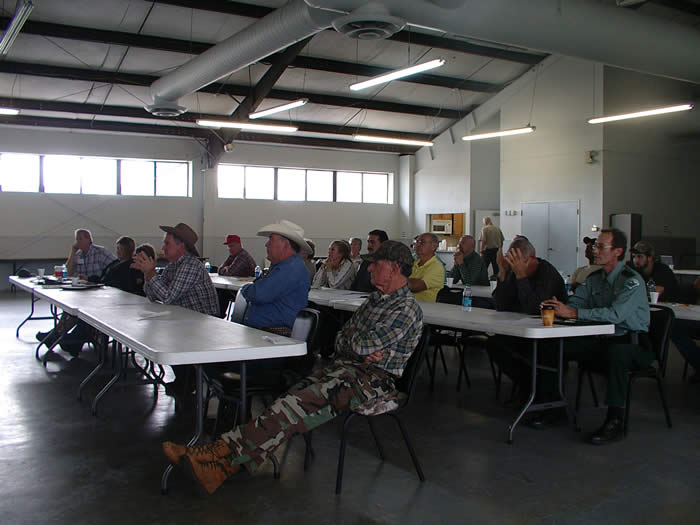
by Matthew Orwat | Jul 8, 2014
 Core, Ornamental and Turf
Core, Ornamental and Turf
Pesticide Training & Exam
July 31, 2014
8:00 am – 5:00 pm
***** 2 CEUs available in CORE and 2 CEUs available in O&T*****
 Location: Washington County Extension Office, at the Agriculture Center
Location: Washington County Extension Office, at the Agriculture Center
1424 Jackson Ave. Chipley, Fl. Suite A
East Wing Conference Room
To Register Contact Matt or Cynthia at 850-638-6180 or mjorwat@ufl.edu .
Cost:
$20.00 all day
Or
$10.00 if only attending morning or afternoon session
Agenda:
CORE Training and Exam section
- 7:45-8:00 — Registration and Introduction (morning refreshments)
- 8:00-9:40 Pesticide Effects on Humans and the Environment
- 9:40 – 10:50 Pesticide Labeling
- 11:00-12:30 CEUs Issued / Exam
- 12:30-1:30—Lunch (provided)
Ornamental & Turf Training and Exam section
- 1:30-2:20 Identifying and Controlling In-sects,Weeds and Disease
- 2:20-3:30 Reading Herbicide Labels and Calculating Application Rates
- 3:30-5:00 CEUs Issued / Exam

by Gary Knox | May 22, 2014
 Nursery IPM Workshop
Nursery IPM Workshop
North Florida
Research and Education Center
May Building Seminar Room and On
-site Outdoor Nursery Facilities
155 Research Road Quincy, Florida 32351
June10-11, 2014
Don’t miss this hands-on, 2-day workshop focused on integrated pest management (IPM) for nursery crops! Learn how to save resources, reduce pest damage and pesticide use, and create a safer working environment for employees, all while earning 13 pesticide CEUs plus FNGLA CEUs! Georgia pesticide CEUs applied for.
You will learn to identify major pests, plant diseases, and weeds using live samples, lectures, and images. Horticulturists, plant pathologists, entomologists, and weed scientists – – from major universities across the southeastern U.S. – – will teach you about some of the latest technologies to prevent pests and use your smart phone as a pest scouting device. Each participant will receive a free copy of IPM Pro, a mobile device app for IPM in ornamental crops, as well as many printed reference materials. In-depth and focused on IPM in ornamentals, this workshop is one of kind and well worth your time!
Registration is only $15 but you must pre-register to participate; no walk-ins allowed! To register and for more information, go to the registration website
by Matthew Orwat | Mar 27, 2014
 UF IFAS Washington County Extension is offering a class for the Limited Commercial Landscape Maintenance Pesticide license and the Limited Lawn and Ornamental license.
UF IFAS Washington County Extension is offering a class for the Limited Commercial Landscape Maintenance Pesticide license and the Limited Lawn and Ornamental license.
Click here to download flyer In PDF
Is it the license you need?
If part of your business is applying herbicides (including Roundup) or certain pesticides to plant beds, the State of Florida requires that you have a limited pesticide license. Operating without one could mean a $5,000 fine. Even more, it could increase your liability in case of an accident.
To become licensed, you need to take a 6-hour course and a written exam. If you are like many people, taking the time and money to go through the course, especially if you are uncomfortable with taking the exam, is really difficult. Therefore, you put it off, again and again.
CountyExtension can help
Because we have access to all the University’s resources, we can give you the very best instructors and programs.Extension will make the 6-hour limited pesticide course easy, interesting and useful.
If you already have your license, the following CEU’s can be earned:
2 CEU in L&O, LCLM, O&T, Private Ag.,Commercial Lawn and Ornamental or Limited Urban Fertilizer, plus 2 core.
Class details:
Tuesday, April 22, 8am-4pm
CEU Renewal 8am-2pm
Washington County Agricultural Center
UF IFAS Washington County Extension Office
East Wing Conference Room
1424 Jackson Ave. Chipley Fl. 32428
For information call:
Matthew Orwat
UF/IFAS-Washington County
Horticulture Agent
Email: mjorwat@ufl.edu
(850) 638-6180
To Register Call Matt or Cynthia at (850) 638-6180
by Mathews Paret | Mar 25, 2014
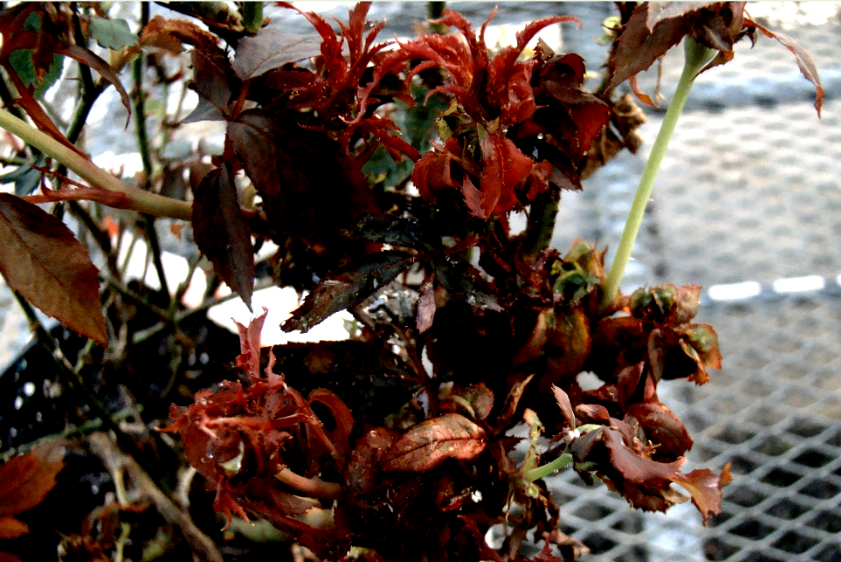
Figure 1. Witches’ broom like appearance, abnormal red discoloration of shoots and foliage, excessive thorns, distorted leaves, and deformed buds and flowers are key symptoms for the devastating Rose Rosette Disease
Roses are one of the most popular flowering shrubs in U.S. with a total wholesale value of 194 million U.S. Dollars. Among the major states in U.S., Florida is the fourth largest producer of roses with a total value exceeding 20 million U.S. Dollars. Among the major diseases on roses, Rose Rosette Disease caused by Rose Rosette Virus (RRV), an Emaravirus has been a major problem for roses in many states in the U.S during the last many years. This virus is spread by an eriophyid mite species Phyllocoptes fructiphilus. This disease was not present in Florida until November 2013, when the disease was first discovered and now confirmed in 3 Florida counties, which include one in the Panhandle. On Wednesday March 19, Horticulturists from throughout the South met at the NFREC in Quincy Florida to discuss detection and control measures that might be used to combat this viral disease.
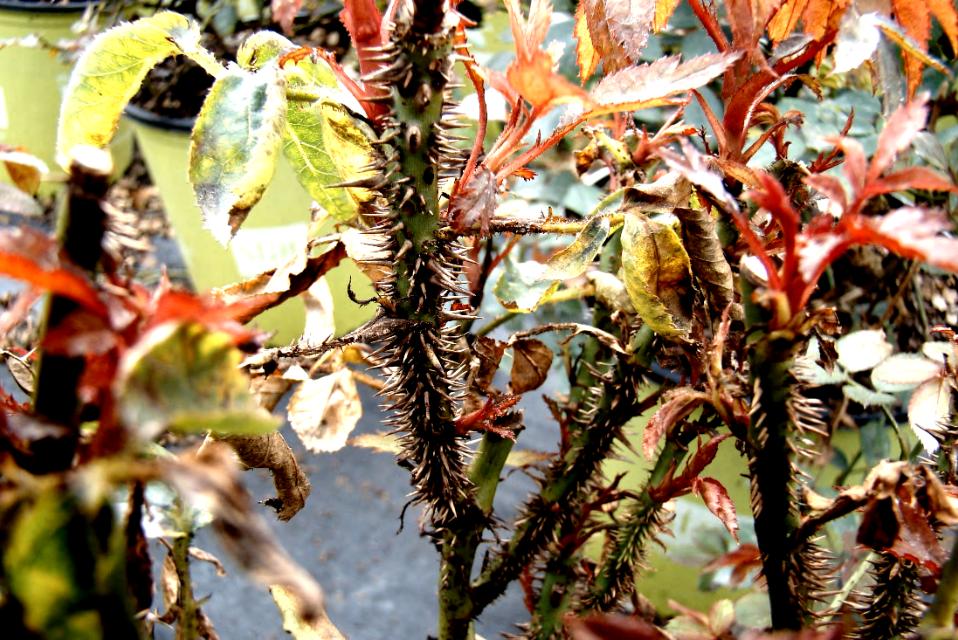
Figure 2. Severe thorn proliferation is another characteristic of rose rosette disease.
The key symptoms for Rose Rosette Disease include witches’ broom, excessive thorns, abnormal red discoloration of shoots and foliage, distorted leaves and deformed buds and flowers (click the link below for symptoms). The diseased plants usually die in 1-3 years. Considering the economic importance of the rose plants, and the highly destructive nature of the Rose rosette virus, research is currently underway by scientists at the University of Florida and the Division of Plant Industry-FDACS to develop early detection methods for the virus and management practices. This project is funded by Florida Nursery Growers and Landscape Association, and the University of Florida, IFAS Dean for Research.
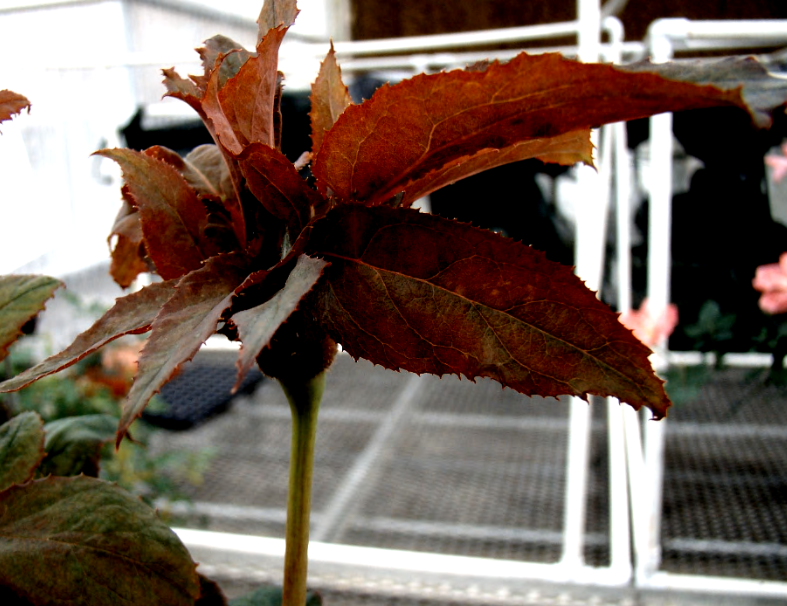
Figure 3. Distorted flower bud; leaf developing from flower bud tissue.
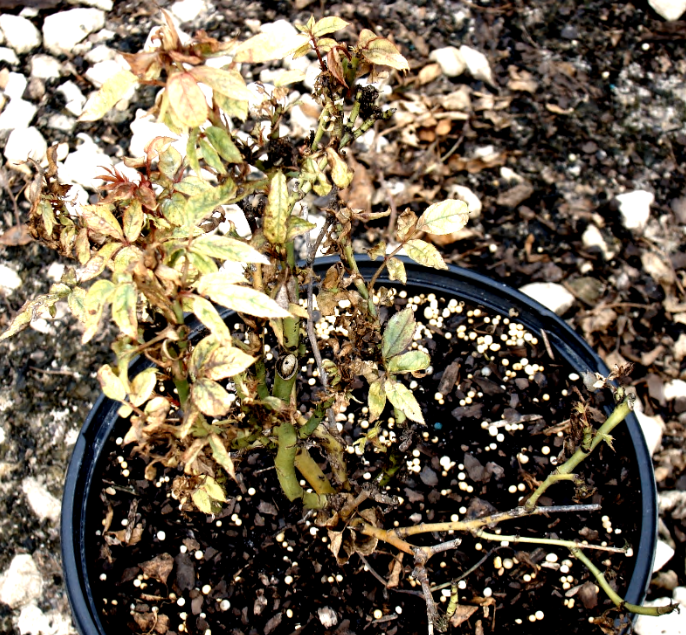
Figure 4. Severe yellowing and stunting of the plant. Infected plants usually die in 1-2 years.
How Home Gardeners and Landscape Professionals Should Respond:
-
Routine scouting and early identification. Submit samples for definitive confirmation.
-
Destroy infected plants. There is no cure for rose rosette disease. Detection will prompt a quarantine by DPI until cleaned up.
-
Eriophyid mite management in early spring is not necessary right now since it has not been found in Florida.
-
Note: The Eriophyid mite species described as the vector for RRV is not known to be present in Florida. Thus mite management recommendations are protective in nature.
Further details can be found in the links below.
U-Scout Pest Alert
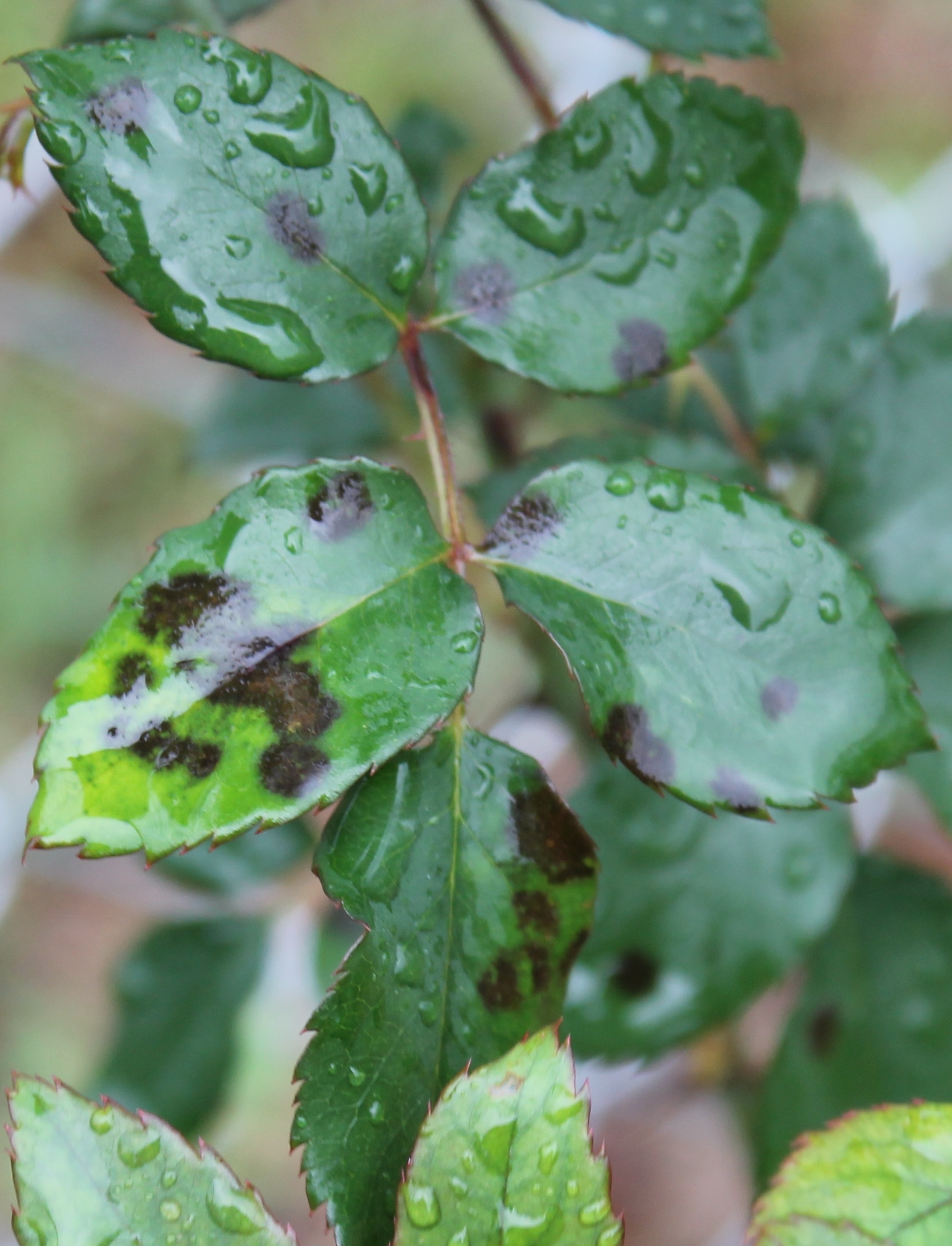
by Matthew Orwat | Mar 18, 2014
March may seem a little early to worry about fungal diseases, but recent prolonged wet weather and warmer temperatures have made the climate just right for a variety of leaf diseases in the Florida Panhandle. One in particular, Blackspot (Diplocarpon rosae), is particularly problematic for the discerning rose grower. Blackspot is just beginning to be seen this season on non-resistant rose cultivars throughout the central Florida panhandle.
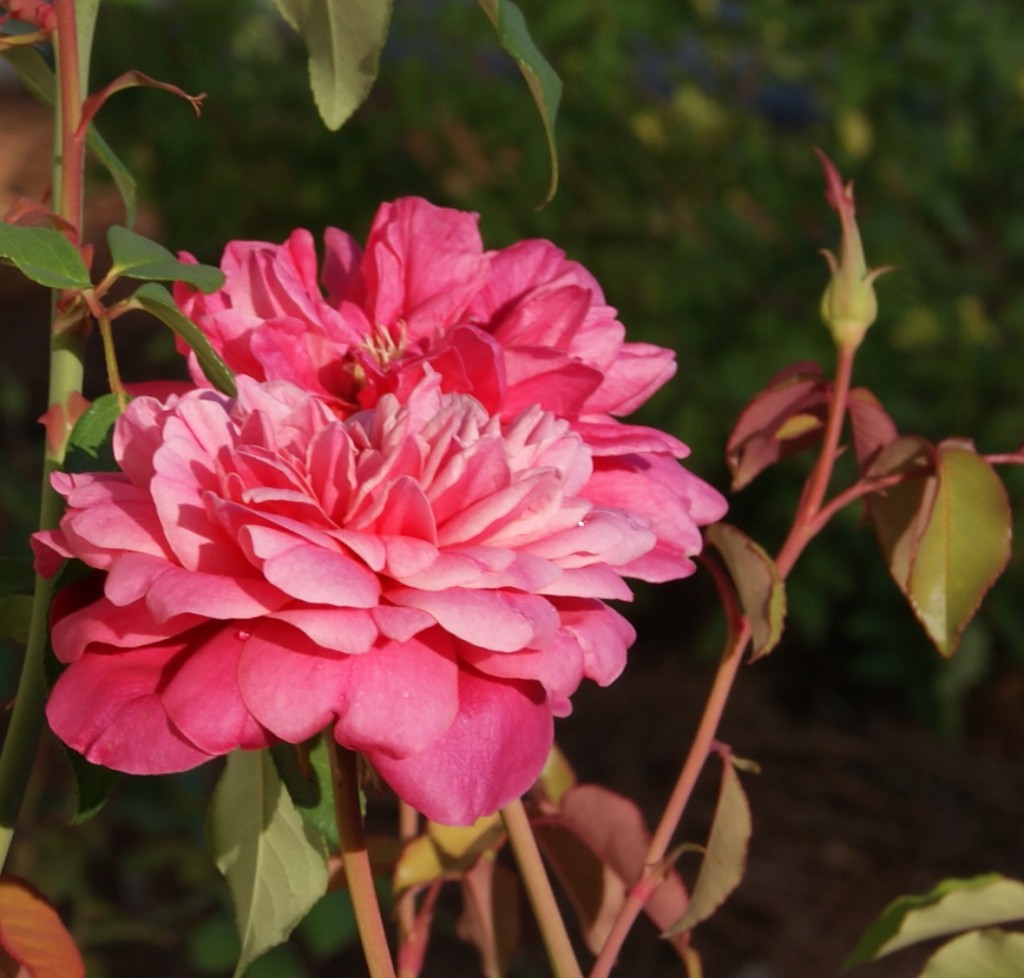
Monsieur Tillier, a rose that shows promise for blackspot resistance, is also part of the Earthkind program. Image Credit Matthew Orwat
Blackspot spores are spread from the canes or leaves of the previous season’s growth by rain or overhead irrigation. To minimize innoculum (black spot spores) remove all leaves from the previous season and any dead leaves at the base of the plant. After the annual pruning in mid to late February, it is a good idea to spray roses with sulfur or copper based fungicidal soap. This helps kill spores that have been laying dormant throughout the winter. Be careful not to spray these products when temperatures rise above 80 ° F. Doing so could burn the plants, although these products will damage tender young growth as well at temperatures below 80 ° F .
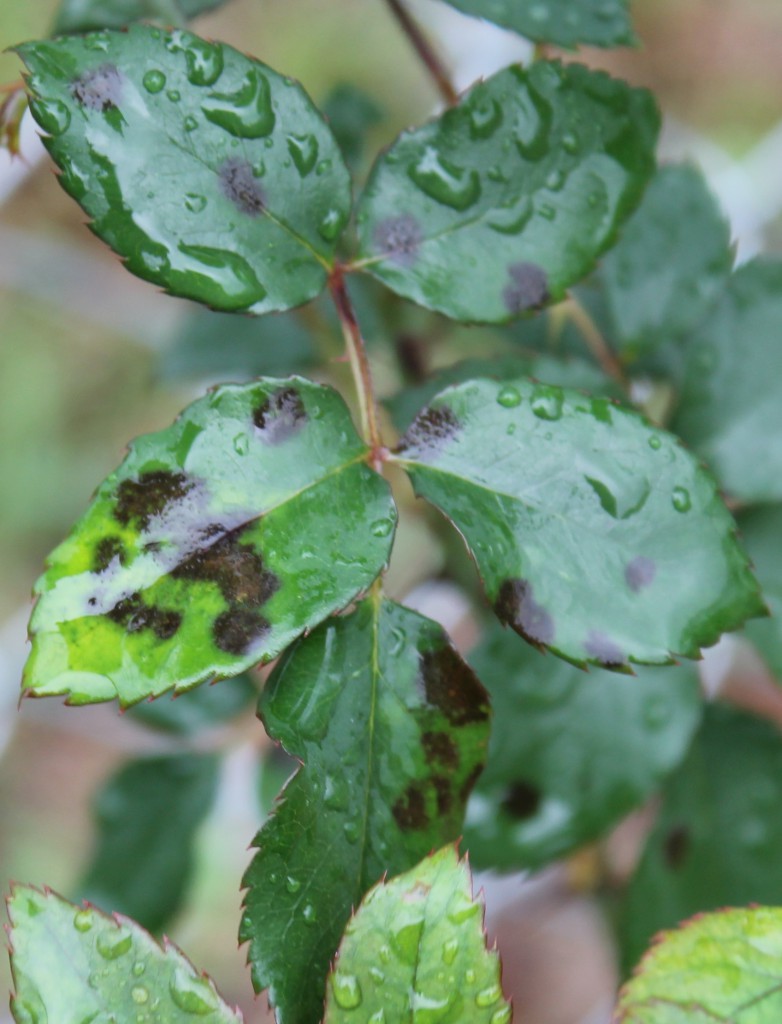
Wet, blackspot affected leaves. Image Credit Matthew Orwat
While dormant sprays often allow rose gardeners to get ahead of the disease, the best defense for the home garden is to plant resistant cultivars. There are several old and new resistant cultivars on the market. Some new resistant cultivars of note include Home Run and Knockout. Also, several older cultivars have demonstrated excellent resistance, such as Mrs. B.R. Cant and Spice. The author has been working with several older rose cultivars at the UF / IFAS Washington County Extension demonstration garden that have shown resistance during the last three years. While this demonstration garden is not a scientific study, several roses that have demonstrated some merit include Belinda’s Dream, Monsieur Tillier, Mme. Antoine Mari, Rosette Delizy and Souvenier de la Malmaison. Another resource for information on disease resistant roses is the Texas Earthkind rose program from Texas A&M University. While disease resistance is not always identical in different parts of the county, their recommended list gives the beginning rose gardener a good place to start.

Mrs. B. R. Cant, a tea rose from 1901 has shown very good blackspot resistance at the UF IFAS rose trials in Quincy, FL. Image Credit Matthew Orwat
Several other cultural methods that will prevent spread of this disease among the rose garden include avoiding overhead irrigation, planting in well ventilated areas and proper plant spacing. These techniques attempt to make the garden environment inhospitable for blackspot proliferation.
Regardless if these management techniques are followed, if traditional large, long-stemmed, high maintenance Hybrid Tea roses are desired, most Florida rose gardeners will need to begin a spray schedule to prevent the onslaught of blackspot. Several fungicides are on the market to aid in this process, but remember that they must be used regularly (every 7-14 days) and modes of action must be rotated. This means that different types of fungicide must be rotated so that resistance to a particular fungicide by the blackspot organism does not develop. Below is a table of recommended fungicides for homeowner blackspot control. For more information, please consult the UF IFAS Extension publication P268, Blackspot of Rose.
Fungicide products marketed toward homeowners for control of black spot on roses
|
Active ingredient
|
Fungicide group
|
Trade name
|
|
Copper hydroxide
|
M1
|
Hi-Yield ® Copper |
|
Copper Sulfate
|
M1
|
Bonide® Copper Dust |
|
Copper Octanoate
|
M1
|
Bonide® Liquid Copper, Natural Guard Copper Soap, Ortho® Disease B Gon® Copper Fungicide |
|
Sulfur
|
M2
|
Bonide® Sulfur Dust, Ferti-lome® Dusting Sulfur, Green Light, Hi-Yield® Dusting Wettable Sulphur, Ortho® Bug-B-Gon® Rose & Flower Care |
|
Mancozeb
|
M3
|
Bonide® Mancozeb |
|
Captan
|
M4
|
Bonide® Captan 50WP, Hi-Yield® Captan 50W Fungicide |
|
Chlorothalonil
|
M5
|
Bonide® Fungonil, Ferti-lome® Broad Spectrum, Hi-Yield® Vegetable, Flower, Fruit and Ornamental Fungicide, Monterey, Ortho® Disease B Gon™ Garden Fungicide , Monterey Fruit Tree, Vegetable & Ornamental Fungicide |
|
Myclobutanil
|
3
|
Spectracide Immunox® Multi-Purpose Fungicide |
|
Propiconazole
|
3
|
Ferti-lome® Liquid Systemic Fungicide, Monterey Fungi-Fighter |
|
Tebuconazole
|
3
|
Bayer Advanced™ Disease Control for Roses, Flowers & Shrubs |
|
Tebuconazole + Imidacloprid
|
3 +
|
Bonide® Rose RX Systemic Drench, Feti-lome® 2-N-1 Systemic |
|
Triforine
|
3
|
Ortho® RosePride® Disease Control |
|
Calcium Polysulfide
|
NC
|
Hi-Yield® Lime Sulfur Spray |
|
Neem Oil
|
NC
|
Bonide® RX 3 in 1, Green Light® Neem Concentrate, Green Light® Rose Defense®, Monterey |
|
Acetamiprid + Triticonazole
|
NC + 3
|
Ortho® Bug B Gon® Insect & Disease Control |
|
Acephate + Resmethrin + Triforine
|
NC + NC + 3
|
Ortho® RosePride® Insect, Disease & Mite Control |
| Fungicide Group (FRAC Code): Numbers (1-37) and letters (M) are used to distinguish the fungicidal mode of action groups. All fungicides within the same group (with same number or letter) indicate same active ingredient or similar mode of action. This information must be considered in making decisions about how to manage fungicide resistance. M=Multi-site inhibitors, fungicide resistance is low; NC= not classified. Source: http://www.frac.info/ (Fungicide Resistance Action Committee, FRAC).
Always read a current product label before applying any chemicals.
|
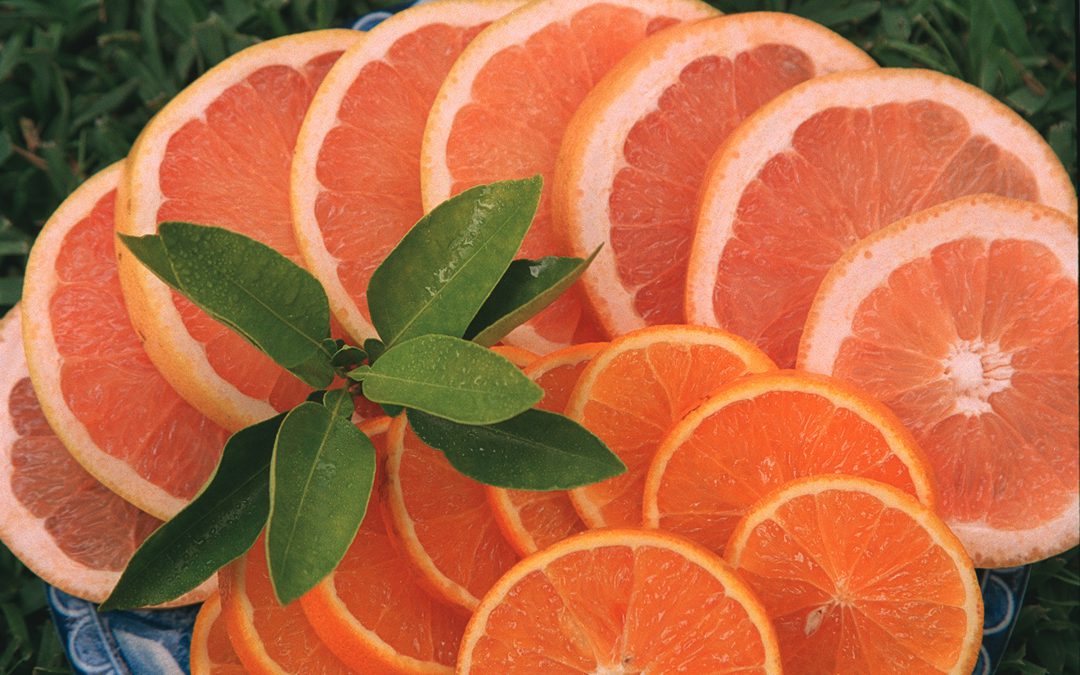
by Mary Salinas | Mar 12, 2014

Delicious citrus! Photo by UF IFAS Thomas Wright.
All varieties of citrus – grapefruit, lemon, tangerine, kumquat and orange – are a vital part of our lives here in Florida. We love to grow citrus in our yards so that we can harvest the fruit fresh from the tree. On a wider scale, the citrus industry has a $9 billion annual impact on our economy providing over 76,000 jobs statewide.
But there are threats to our dooryard and commercial citrus from pests and disease. Only vigilance will help to combat the challenges so that we may continue to grow and enjoy our beloved citrus trees.
What can we do to protect our citrus?
- Learn about how to properly care for citrus and the pests and diseases that occur.
- Report any serious diseases like suspected citrus canker or citrus greening to the Division of Plant Industry by calling toll-free 1-888-397-1517.
- Purchase citrus trees only from registered nurseries – they may cost a little more but they have gone through an extensive process to remain disease and pest free. That will save you $$ in the long run!
- Don’t bring plants or fruit back into Florida – they may be harboring a pest!
- Citrus trees or fruit cannot move in or out of the State of Florida without a permit. This applies to homeowners as well as to the industry in order to protect our vital dooryard trees and citrus industry.
For more information please see:
Save Our Citrus Website
UF IFAS Gardening Solutions: Citrus
Citrus Culture in the Home Landscape
UF IFAS Extension Online Guide to Citrus Diseases
Your Florida Dooryard Citrus Guide – Common Pests, Disease and Disorders of Dooryard Citrus

 Core, Ornamental and Turf
Core, Ornamental and Turf Location: Washington County Extension Office, at the Agriculture Center
Location: Washington County Extension Office, at the Agriculture Center











